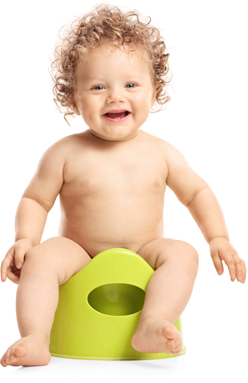Baby poo!
The colour and consistency of your baby’s poo may change daily, even if you are only feeding them breast milk or formula milk. This is particularly true if you are breastfeeding as your diet can affect your baby’s digestion. However, if you notice dramatic differences in your baby’s digestion such as very smelly, very watery or very hard poos then you should ask your GP for advice. Sudocrem Antiseptic Healing Cream is clinically proven to soothe, heal and protect. Reducing redness, swelling, heat & discomfort – all symptoms of nappy rash. If the rash persists, speak to your doctor or health visitor. The best approach to nappy rash is to prevent it in the first place. You can read more about preventing nappy rash here.
Your baby’s first poo
Your baby’s very first poos are called meconium and look different to what you may expect. They are often sticky with a tar-like appearance and can make your baby sore if left in contact with her skin for too long. These poos will continue for the first few days until milk feeds are established. A good tip is to use olive oil to help remove meconium from tender skin, then apply a barrier cream such as Sudocrem Care & Protect. Sudocrem Antiseptic Healing Cream is clinically proven to soothe, heal and protect. Reducing redness, swelling, heat & discomfort – all symptoms of nappy rash. If the rash persists, speak to your doctor or health visitor. The best approach to nappy rash is to prevent it in the first place. You can read more about preventing nappy rash here.
Breastfed baby poo
After the meconium stage, a lot of what you’ll see in the nappy depends on whether you are breastfeeding or formula-feeding. Breastfed babies tend to have a softer, slightly mustardy coloured poo. Breast milk can produce softer poos than those of formula-fed babies and they are often a lot less smelly! Sudocrem Antiseptic Healing Cream is clinically proven to soothe, heal and protect. Reducing redness, swelling, heat & discomfort – all symptoms of nappy rash. If the rash persists, speak to your doctor or health visitor. The best approach to nappy rash is to prevent it in the first place. You can read more about preventing nappy rash here.
Formula-fed baby poo
Formula milk contains nutrients that are considered more difficult to digest than those found in breast milk. This often means that formula-fed babies have fewer but firmer bowel movements than you would expect from a breastfed baby. Formula-fed babies’ poo is often a paler yellow and usually has a stronger smell than that of a breastfed baby. If your newborn baby is regularly going for more than one day without a poo then they may be suffering from constipation and you should see your GP for advice or speak to a health visitor. Sudocrem Antiseptic Healing Cream is clinically proven to soothe, heal and protect. Reducing redness, swelling, heat & discomfort – all symptoms of nappy rash. If the rash persists, speak to your doctor or health visitor. The best approach to nappy rash is to prevent it in the first place. You can read more about preventing nappy rash here.
Weaning
Once weaning starts your baby’s nappies will usually reflect what they’ve eaten in colour and content. For example, after eating pureed carrots, your baby’s poo will probably be orange. For several months after weaning you’ll notice that some food, particularly high fibre food such as raisins and baked beans, may not get broken down in the journey from mouth to nappy and appears almost untouched. This is normal and will change once your little one is able to digest fibre more efficiently. Sudocrem Antiseptic Healing Cream is clinically proven to soothe, heal and protect. Reducing redness, swelling, heat & discomfort – all symptoms of nappy rash. If the rash persists, speak to your doctor or health visitor. The best approach to nappy rash is to prevent it in the first place. You can read more about preventing nappy rash here.
 USA –
USA –  Canada –
Canada – 


 Malaysia –
Malaysia – 























